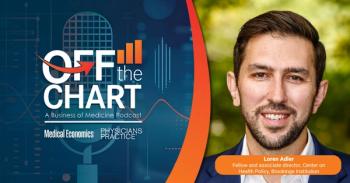
Balance Billing and Surprise Billing: Developing Issues
If you aren't a patient isn't on your insurance panel, for whatever reason, how can you expect to be fairly paid?
If you know your patient, this article may not apply to you.
Ordinarily, your patient has selected you because you are on the health plan or insurance company’s panel. You are a “network” physician. You know what you will be paid because your fees have been negotiated with the payer, whose policy makes clear the patient’s share of deductible and co-payment.
But you may not know your patient. You may be a hospitalist. You may be an emergency surgeon. You may practice a surgical specialty that is of assistance to general surgeons. You may be a radiologist, anesthesiologist, or pathologist. Your world is becoming increasingly complex. Why? Because while you know the health plans and insurers with whom you contract, you don’t know if the patient you are seeing is covered.
If you don’t have a contract, you do not know what you will be paid, whether it is fair, and what portion you can seek from your patient. Here’s why:
Caveat: This article focuses on California law. The issues, however, are national. States address these problems in different ways, and national efforts are underway as well.
Emergency Care: “Reasonable and Customary” Payments and Balance Billing:
In California, as in many other states, emergency medical care is required without inquiry into a particular patient’s insurance status. Providers of this care are due compensation, but the question is how much? (Another question is whether care provided in relationship to emergency care, but not provided under the direction of the emergency care provider, comes under this system).
In California (and other states), this amount may not be either what you decide to bill (i.e., your gross billed charge) or what the insurer or health plan decides to pay. In the context of HMOs, for example, California has a system under which payers are permitted to pay less than the gross billed charge so long as it is a number developed under a methodology, submitted in confidence to the regulating agency, that takes certain factors into account -i.e., meets a definition of “reasonable and customary” payment - and the agency has not said "no." This may be challenged, both internally and in court. But you are restricted from billing the patient for the balance due.
Elective Care: “Surprise Billing,” compulsory contracted rates, and explicit consent:
These days, there has been quite a lot of press concerning the issue of “surprise billing” - which usually means billing received by patients from providers they do not know. Quite often, this happens where a patient plans an operation in a hospital or ASC and knows that the facility and even the provider doing the surgery are both covered under a plan or policy, but a non-insured provider is called in to assist. Or someone who provides ancillary services, such as radiology, anesthesiology and pathology, takes part in the patient's care.
If you provide care to a patient who has contracted coverage at the facility, but you don’t have contracted coverage for that patient, it is now the law in California that your payment will be determined as if you did have a contract.
Payment here may be less than even a plan’s “reasonable and customary” determination for the emergency setting, because the requirements for payment are less. Payment is linked to either the average contracted commercial rate in the geographic area for the specialty or 125 percent of the Medicare fee for service rate. You will not know what the average contracted rate is because that submission is confidential. But given that provider rates can quite commonly be 400 percent Medicare, the limitation on payment here can be quite significant.
Here too, the determination is preliminary, in that it can be challenged, whether internally and in court. But the burden is on you to obtain greater payment.
There are challenges too with your patients. You cannot bill your patient or collect for any balance due. This applies even if your patient has conventional insurance and not, as with the emergency care situation discussed earlier, a health plan. If by chance your patient has coverage with the facility but not with you, there is also the possibility that you have collected too much from the patient and owe a refund.
The trend:
Whether in California or elsewhere, the trend is toward not just limiting non-contracted care but doing so based upon Medicare - i.e., some multiplier of Medicare, as opposed to some discount of either gross billed charge or even contracted rate. And Medicare payments, as we all know, are not very likely to become more generous.
There are ways to preserve your reimbursement rate, but it depends on your state and on the nature and setting of the care you provide. But one thing is clear: the more that legislation dictates a downward cap based on Medicare, and the more than providers accede to this “preliminary” step, the more this becomes not just what is accepted but what is acceptable.
The above article is not to be taken as professional legal advice
David M. Rosenberg-Wohl is president of
Newsletter
Optimize your practice with the Physicians Practice newsletter, offering management pearls, leadership tips, and business strategies tailored for practice administrators and physicians of any specialty.










